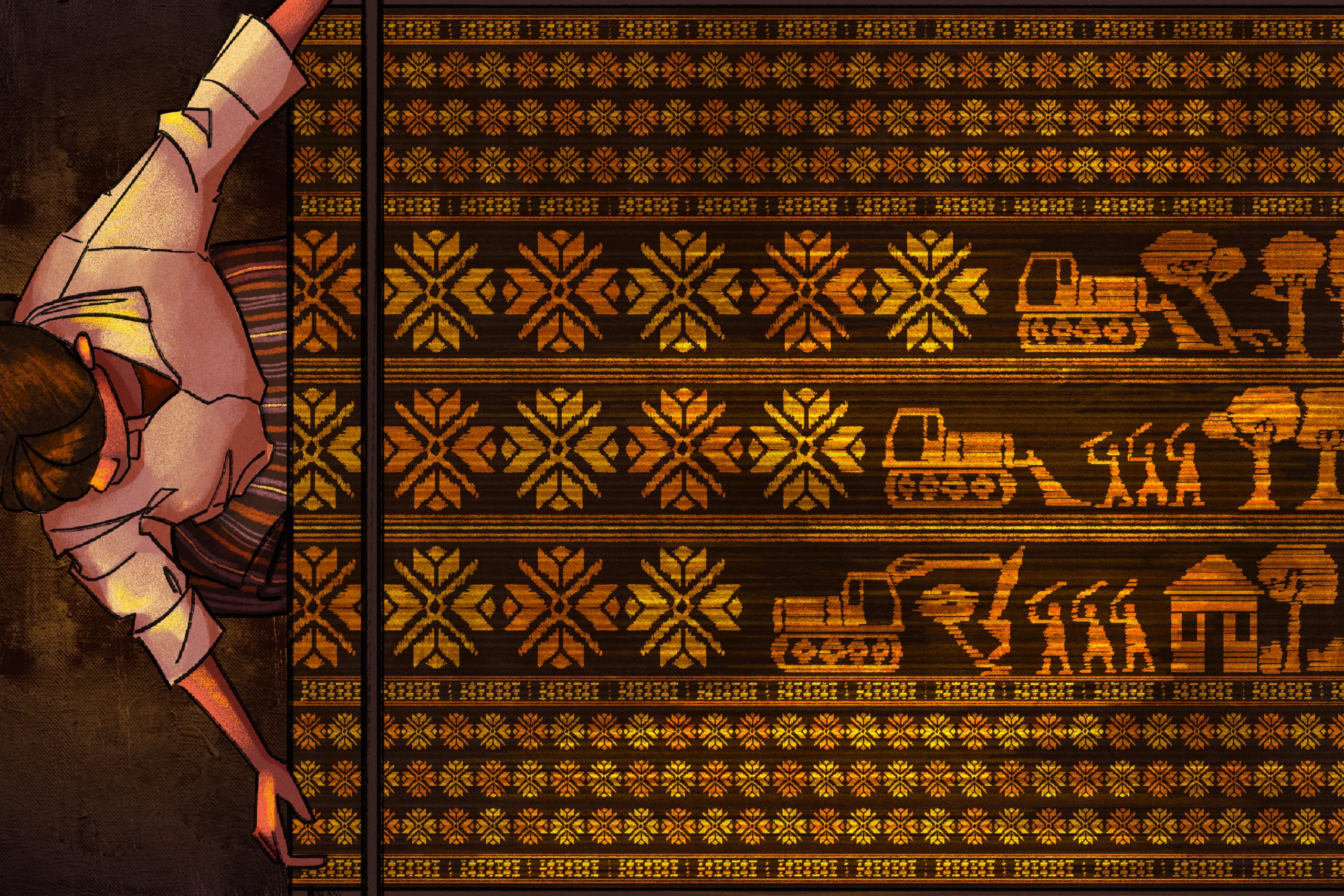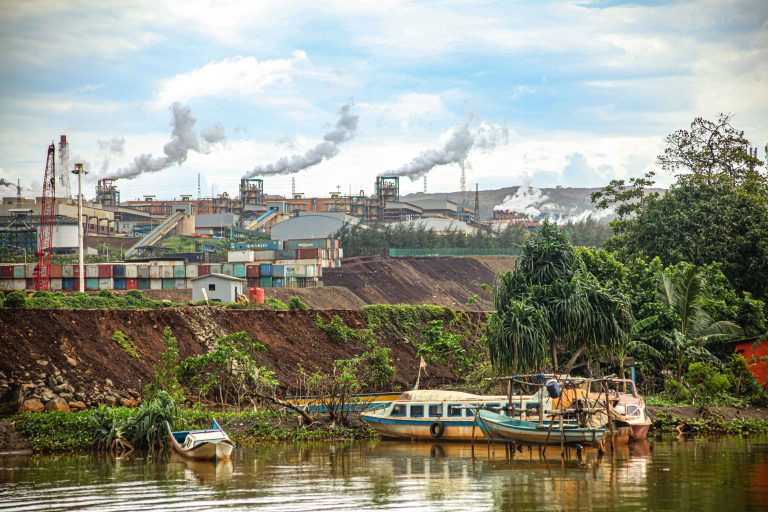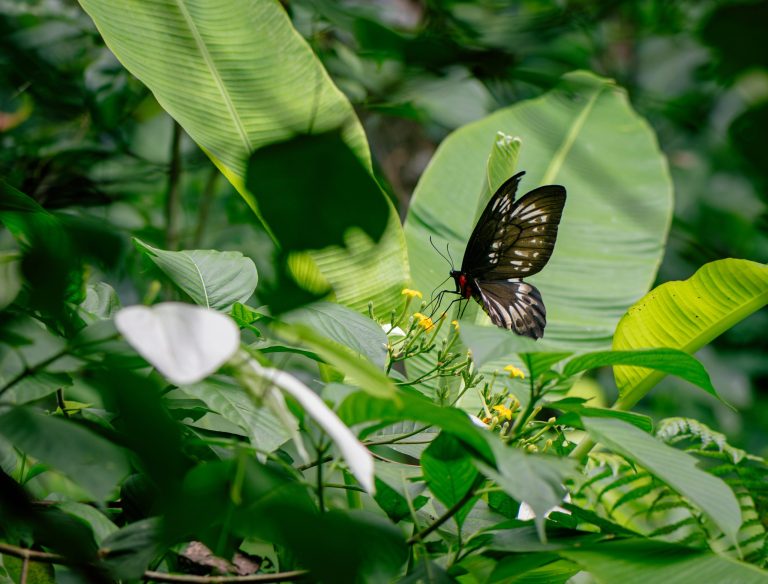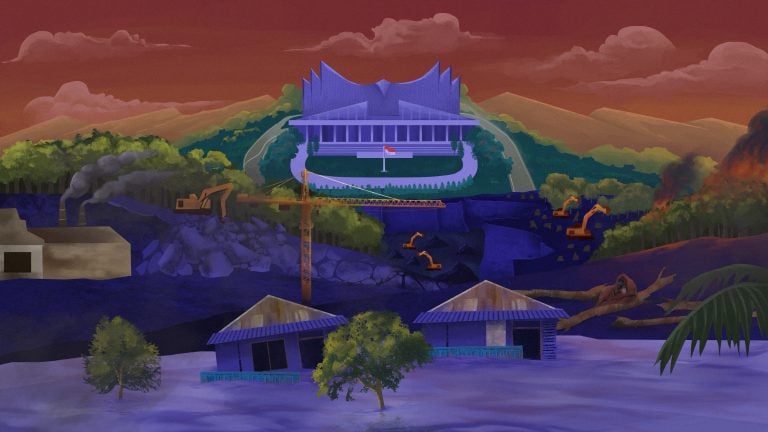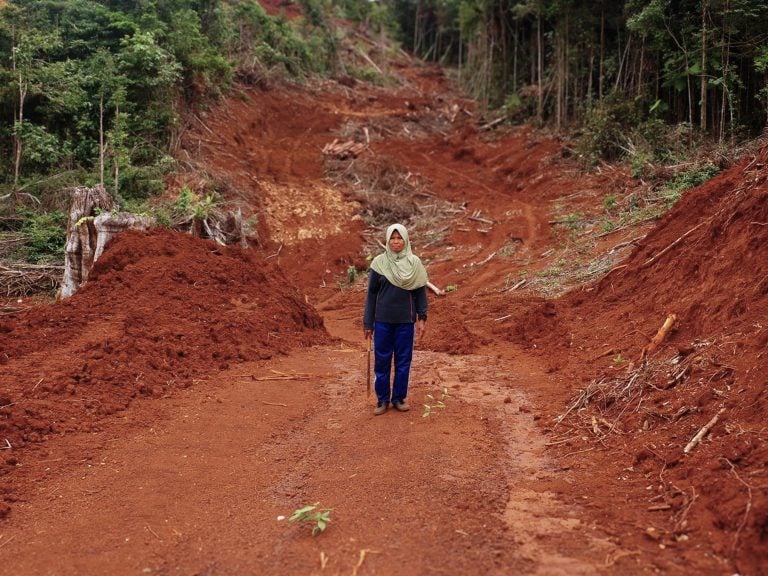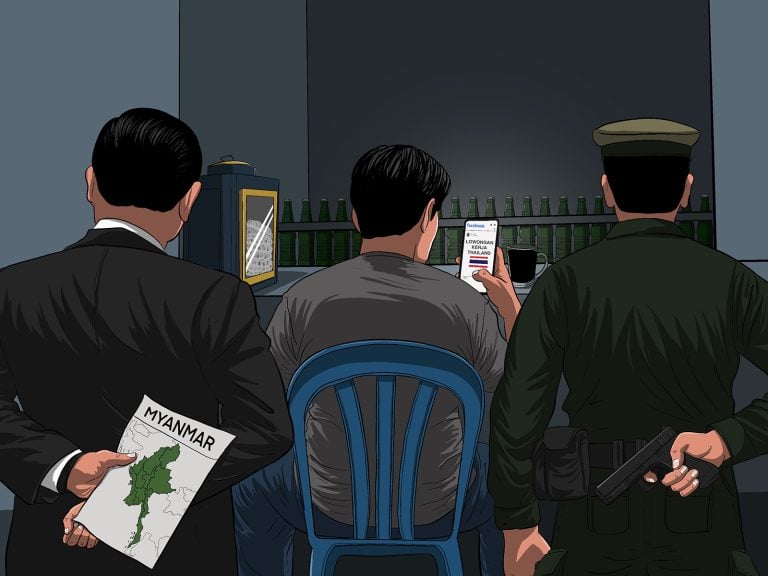A group of women from an indigenous village on Flores Island, East Nusa Tenggara, opposed the location of a dam, one of the National Strategic Projects of then-President Joko “Jokowi” Widodo. Covering over 617 hectares, the Lambo Reservoir, slated for completion by 2025, would submerge the customary villages of three indigenous communities along with their gardens, ancestral graves, and traditional ritual sites.
HERMINA MAWA teared up as she recalled being handcuffed by police officers of the Mobile Brigade (Brimob) on October 4, 2021. Her arrest immediately angered around 20 women who rejected the dam construction.
“Cuff us all, cuff us all. Take us all,” they shouted.
“Bring me to the police station, go ahead,” said Mama Mince, Hermina’s nickname, citing her reaction.
That afternoon, at least five Brimob members escorted surveyors measuring indigenous people’s land in Nagekeo Regency on Flores Island, East Nusa Tenggara (NTT). The site of Lowo Se in Rendubutowe Village is the center of the Lambo Dam project, which then-President Joko Widodo designated as a National Strategic Project (PSN) in 2015. It is also known as the Mbay Dam, after the capital of Nagekeo.
A group of women greeted the land surveyors and blockaded them when they were about to leave the site in Roga-roga Hamlet. Mama Mince sat in the middle of the entrance to the site; about 10 other women encircled her, while the others lined up at a guard post the residents had built.
A Brimob officer in full gear and a black mask immediately stepped forward to arrest Mama Mince, with two other policemen who held her hands and handcuffed her.
“My wrists were sore,” Mama Mince said. “I couldn’t move because they were big, strong men.”
Mama Mince and dozens of women from the Rendubutowe indigenous community were fighting to protect their land from the government seizing it. Every time the surveyors entered their village, the locals chased them away.
“We reject the location because it’s the site of our traditional rituals. We offered new locations, but the government ignored us,” said Mama Mince. Officials had said their proposed sites were too small for the planned capacity of 51.74 million cubic meters for the province, which is often exposed to drought.
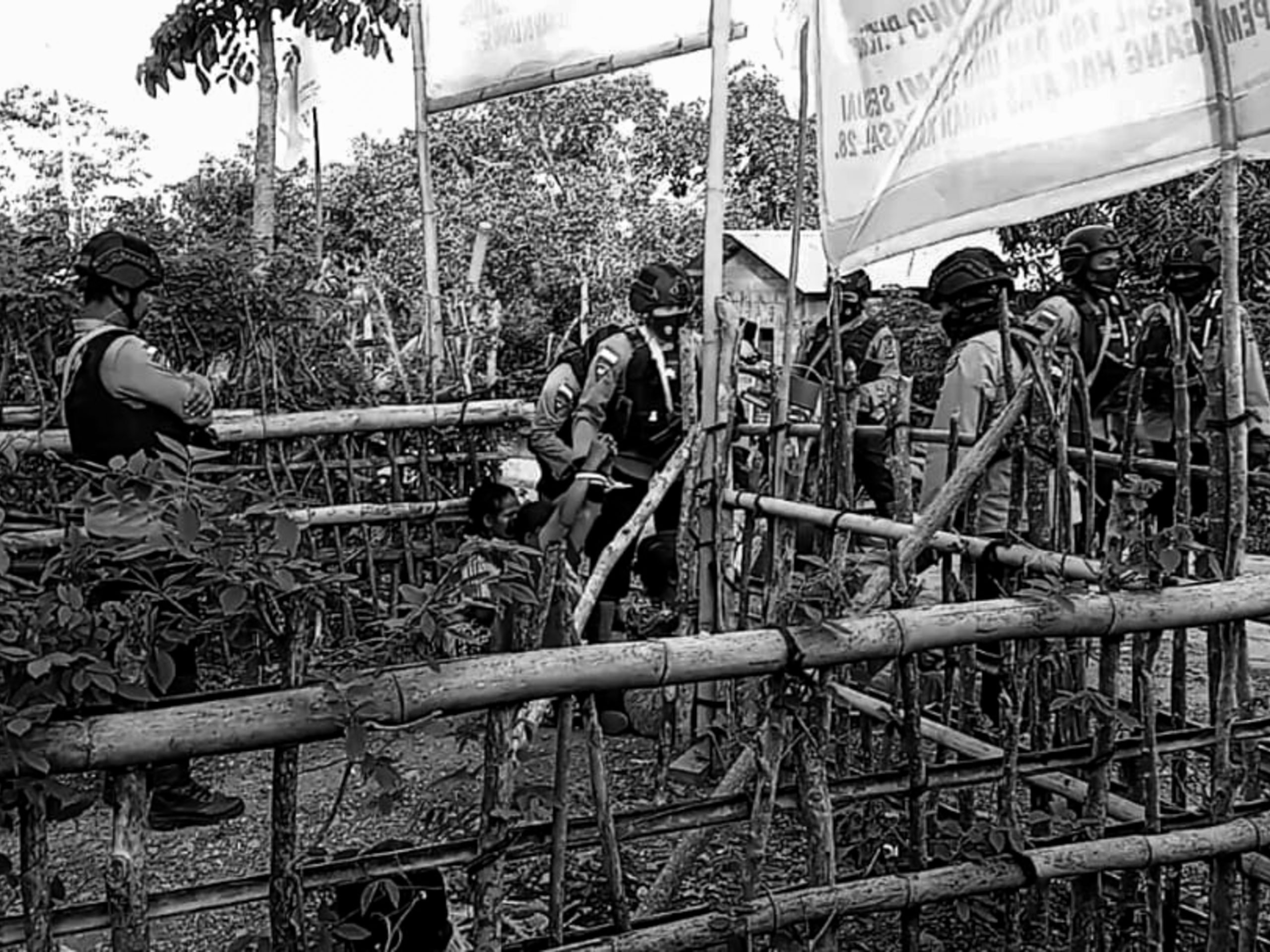
Her fellow activist, Beatriks Nazu, also suffered mental distress when defending the customary land from the dam project.
On December 9, 2021, in an attempt to drive the police out of their village at the entrance to Lowo Se, six women spontaneously threw off their clothes and bras, and broke into screams and cries.
Beatriks was stunned. She backed away, grabbed the fence, and burst into tears.
“It was heartbreaking. I felt it was the climax of the indigenous women’s struggle. The government ignored our customs and traditions. They boast about [Indonesia] being a cultured nation, but in reality it’s tyranny,” she said.
“Forcefully taking away ancestral land is the same as destroying the dignity and value of women. So, let the women protest topless before them.”
Alerta…‼️
Pagi ini, kembali terjadi pemaksaan yang dilakukan oleh Aparat Polri pada Masyarakat Adat Rendubutowe yang diduga untuk melancarkan Proyek Strategis Nasional (PSN) yaitu pembangunan Bendungan Lambo di Desa Rendubutowe, Nagakeo, Provinsi NTT.#SahkanRUUMasyarakatAdat pic.twitter.com/bIlbknBZnS
— Aliansi Masyarakat Adat Nusantara (AMAN) (@RumahAMAN) December 9, 2021
Beatriks, a contract teacher, revealed that she was pressured to resign due to her outspoken opposition to the dam project. Despite this, she refused to be silenced, asserting, “I am also fighting for the future of the children.”
“I was dismissed for the first time in 2015, then again in 2017 and 2019. Recently, the principal called and asked me to teach again, but I rejected [the offer],” she said.
Ceremonial Site Displaced by Dam Project
On a Saturday morning in mid-December 2022, Mama Mince, her sister-in-law Marselina, and her mother Mama Imelda gathered in the back room of Fransiskus Dero’s house. Fransiskus, Mama Mince’s brother, is the head of RT 11 in Malapoma Hamlet, Rendubutowe. In this patrilocal community, women typically move to their husbands’ family homes after marriage.
Mama Mince had been living with her brother for 12 years. The 6×10 meter home, shared by five family members, had a simple layout with two bedrooms and two additional rooms. The back room served as a dining area where the family gathered for meals, while the front area was used as a living room.
Between household chores, the rooms became weaving spaces. That day, Marselina worked in the dining area, Mama Mince in the living room, and Mama Imelda wove fabric outside the house.
“Our daily expenses are supported by the weaving of the ema (the children),” Mama Imelda said.
After stepping into the kitchen outside the house, Mama Imelda returned to the main room. She had planned to set up the garden fence with Fransiskus but decided to postpone it. Their garden, planted with rice and corn, was among the areas marked for the dam project.
Mama Imelda explained that the mapped area included their roughly 7-hectare plot, where their home and crops stood. “So this is the last time we’ll be planting here,” she said.
“People say, whether we accept it or not, we’ll still have to leave. We’re holding out for now, but we don’t know where we’ll move to in the next day or two,” she said.
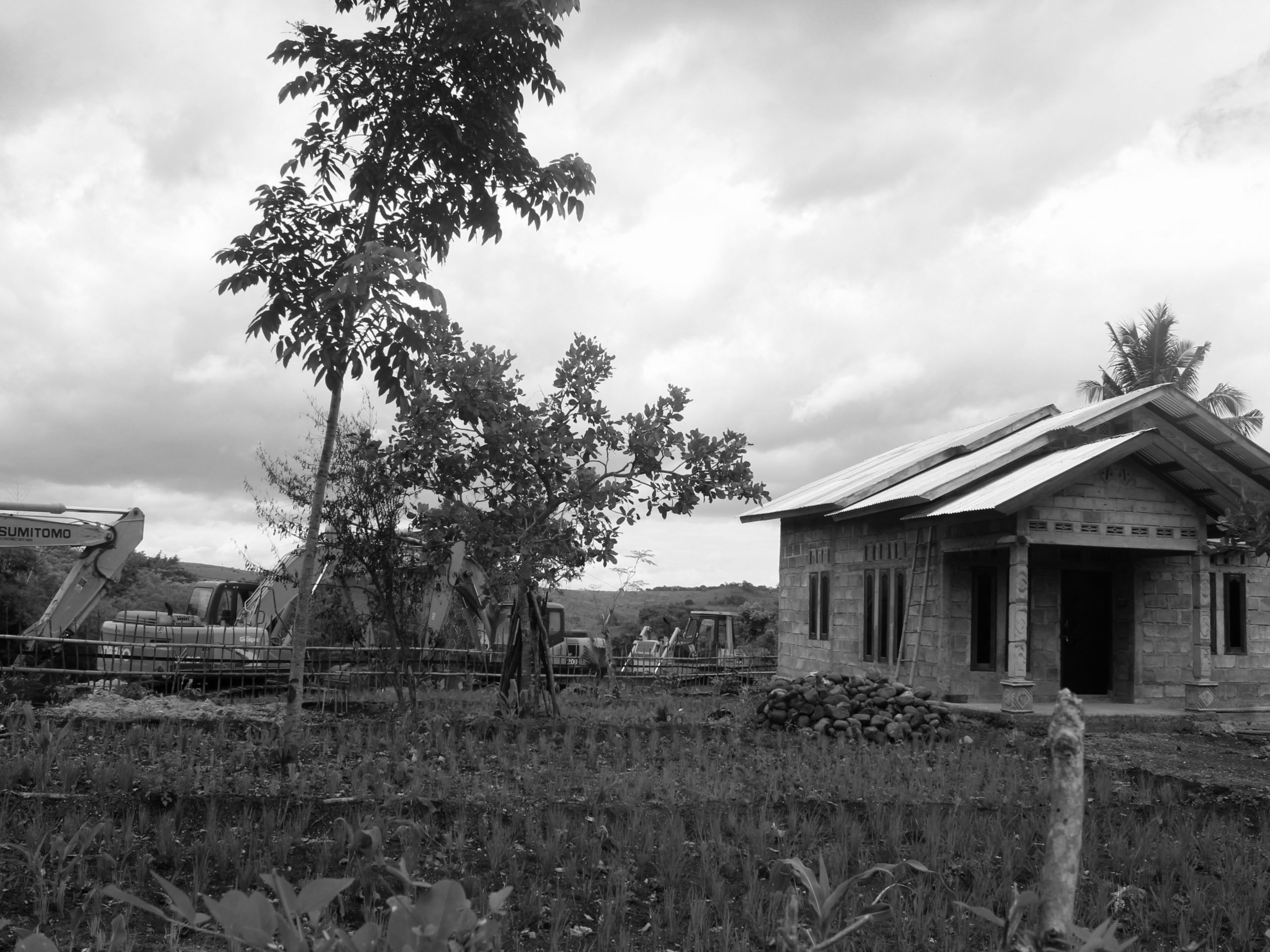
Transfixed by her mother’s words, Mama Mince leaned against her chair and stared at the ceiling, her eyes filling with tears. Her gaze shifted to the national Red and White flag that officers had erected on their fence. Occasionally, her eyes lingered on the tire tracks left by the machinery, and she shook her head in dismay.
Mama Mince then stepped over to the weaving loom by the window in the front room. She didn’t want to dwell on her past struggles for too long. Exhausted by over a decade of resistance against the project, she sought a way to reconcile with the ongoing fight.
“We feel greed over our customary land,” said Mama Mince, adjusting her weaving equipment.
In addition to being homemakers and farmers, weaving has long been a daily routine for indigenous women here. Like Mama Imelda and Marselina, Mama Mince earns her income from weaving.
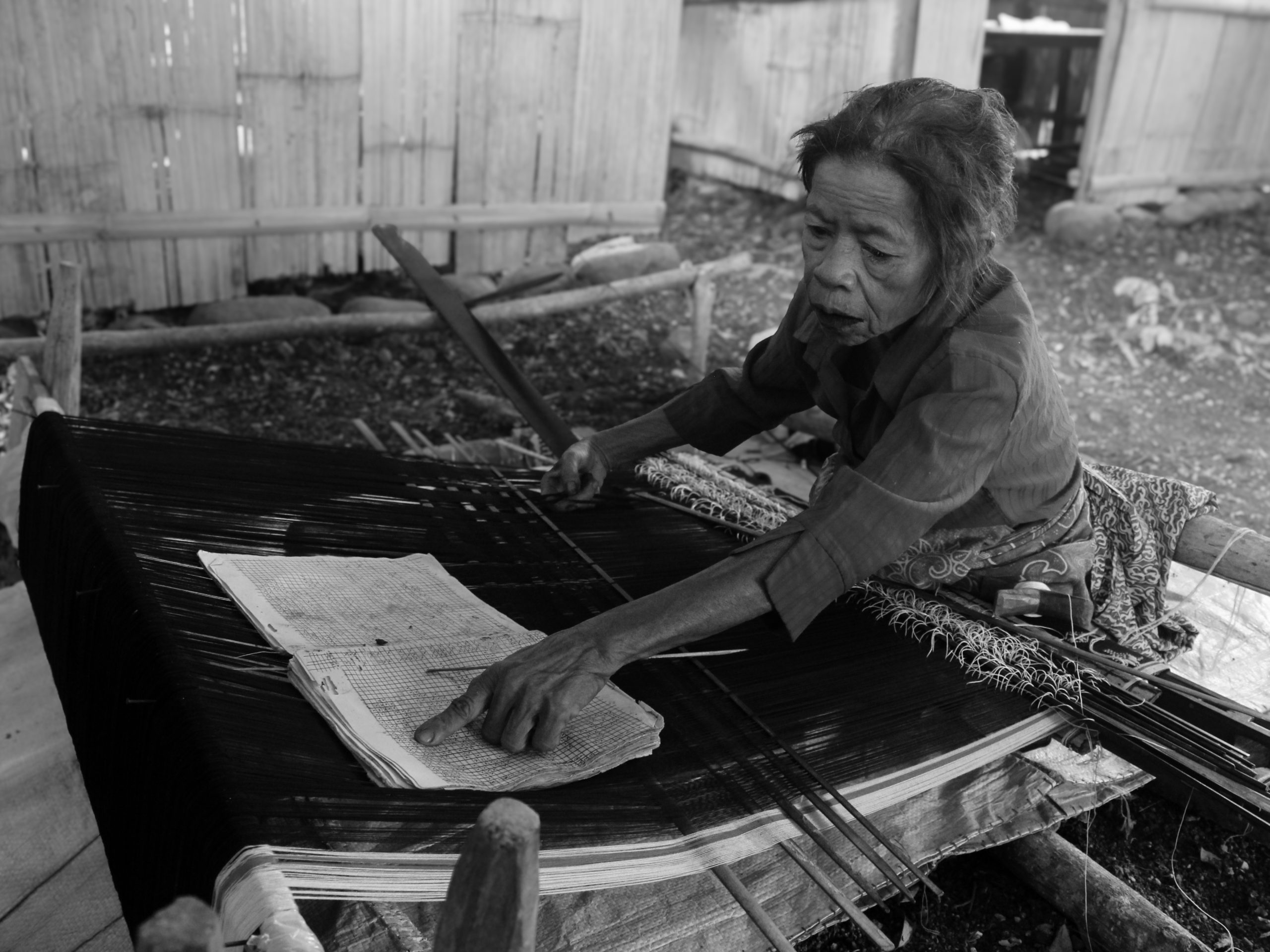
Mama Mince was born in 1974 in Kawa, an indigenous hamlet in Labolewa Village, 15 kilometers from Malapoma Hamlet. After her father married Imelda, a woman from Malapoma, the family was granted authority to settle on Rendubutowe customary land.
In 1997, Mama Mince married her husband in a traditional belis ceremony, where the groom’s family paid dowry to the bride’s family, followed by a Catholic church wedding. She moved in with her in-laws in Malapoma, becoming recognized as an indigenous patrilocal woman of the Rendu tribe within the Rendubutowe indigenous community. Her husband’s passing in 2005 left her raising two children, now in their 20s.
“I’m fighting for this [land] because I was raised with our traditions. So will my children,” said Mama Mince, arranging the threads on her weaving loom.
Since her pre-teen years, Mama Mince, like other girls in the community, had been honored through traditional rites preparing her for motherhood, known as Tau Ae and Koa Ngi’i. Local indigenous leader Matheus Bhui explained that these rituals mark a girl’s transition to marriageable age.
The Tau Ae ritual was performed for Mama Mince in 1984, when she was in the 5th grade. Her father bathed in the river wearing a woven sarong, which was then drifted downstream to symbolize cleansing. The Koa Ngi’i ritual, a tooth-filing ceremony, followed five years later when Mama Mince had her first menstruation. However, the rivers and lontar palm trees essential to these rituals are among the areas that will be submerged by the dam project.
Fathers perform the Tau Ae ritual for their sons as well, followed by the Tau Nuwa ritual, signifying readiness for marriage. This includes a symbolic bathing ceremony, teba, where old clothes are replaced with new ones, and roasting yams by the river.
The Lowo Se area is particularly sacred to the Rendubutowe indigenous community. It serves as a maro, a shelter for hunters during expeditions, and a site for ancestral rituals to ensure good harvests and repel pests.
“All this area will be displaced by the dam project,” Matheus added.
‘Our Lives Are Being Killed at a Stroke’
Mama Mince, Beatriks Nazu, and other residents from the Rendubutowe, Labolewa, and Ndora communities have opposed the dam location in Lowo Se since the feasibility study began in 2009. The community proposed alternative sites in Lowo Pebhu and Malawaka to then-Manpower Minister Jacob Nuwa Wea during his visit to Mbay in 2001, successfully delaying the project.
However, under President Jokowi’s administration, the Mbay/Lambo Dam project was revived in 2015 as part of the National Strategic Projects (PSN) scheme, which includes seven planned dams in East Nusa Tenggara. Jokowi promoted the dam as a solution to water shortages and a means to boost agricultural productivity.
Since then, the Rendu indigenous community has faced what they describe as “forced measurements” of their homes, gardens, and ritual sites.
To resist, the community formed the Forum Against the Lambo Dam Construction, which includes indigenous communities, youth, students, and patrilocal women. The forum is supported by the Nusa Bunga Indigenous People’s Alliance of the Archipelago (AMAN Nusa Bunga) and the Nusantara Indigenous Community Defenders Association (Perhimpunan Pembela Masyarakat Adat Nusantara), which provides legal assistance.
Although the indigenous communities have consistently emphasized the cultural and spiritual significance of the dam site, their claims were excluded from the project site maps attached to environmental impact assessment documents.
According to Regental Regulation No.1/2011 on Nagekeo Regency’s Spatial Planning (2011–2031), the Lambo Dam site is classified as grazing land and agricultural dryland, not a protected forest. This classification is reinforced by a 2018 letter from the provincial Public Works and Spatial Planning office, which supports the dam project.
For the indigenous communities, however, the land represents more than its official designation—it is the heart of their identity and traditions.
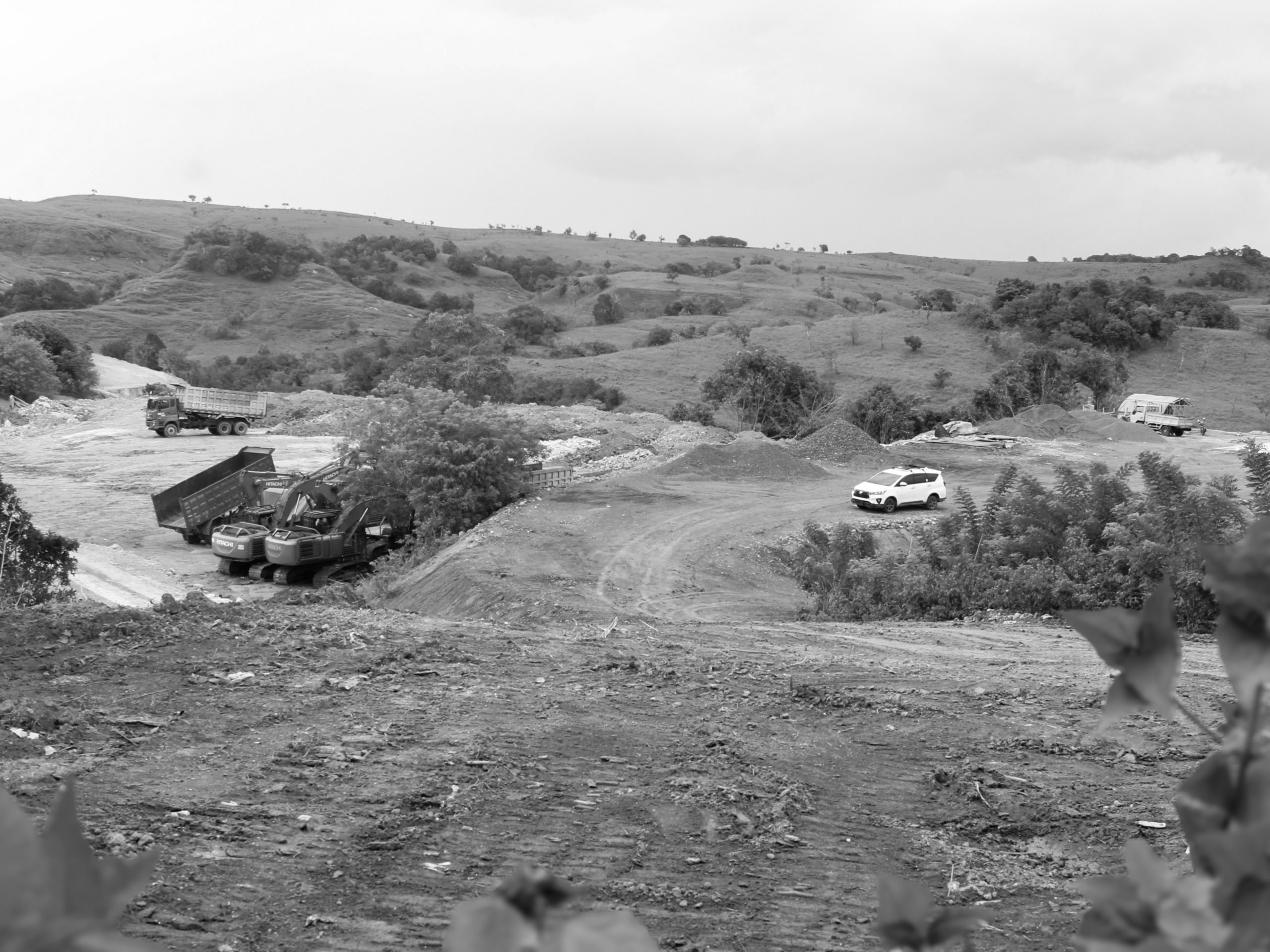
Philipus Kami, then chair of AMAN Nusa Bunga, argued that the Mbay/Lambo Dam project was “legally flawed” from its inception. He highlighted that cultural identities were excluded from the official maps of Nagekeo Regency, which could lead to violations of the Indonesian Constitution’s provisions on human rights. He pointed to Article 28-I, Clause 3, which states: “The cultural identities and rights of traditional communities are to be respected in conjunction with progressing times and civilization.”
Philipus emphasized that erasing cultural identities through development policies amounts to denying the existence of indigenous communities. He also noted that patrilocal women are especially vulnerable in land-grabbing cases like the Lambo Dam, as their roles and livelihoods are deeply tied to the land.
“When their customary lands are displaced, indigenous women face multiple burdens: they lose their domestic space, caregiving and healing spaces, and economic means derived from local natural resources,” he said.
“They will lose their living spaces, as will their future generations. This is what happens when the government ignores their rights,” Philipus added.
A Broader Crisis for Indigenous Women
The chair of AMAN Women, Devi Anggraini, also criticized the government’s approach, highlighting the broader struggles of indigenous women over the past decade. While many grassroots communities are striving for sovereignty, independence, and dignity, the government, she argued, is undermining these efforts.
“The government is striking at our independence,” Devi said during AMAN Women’s year-end reflection event in Bogor, West Java, on December 6, 2022.
She warned of the catastrophic impact of development projects that displace indigenous communities. “Our lives are also being extinguished instantly. [We are] disappearing. This is part of a destruction of human lives that wipes out entire villages. Their history is lost, and their culture can vanish,” she said.
Devi lamented the commodification of indigenous lives and culture, asserting that no amount of money could replace their value. “People are easily replaced with money. Do our lives really end with money? No!” she exclaimed.
Her statement underlined the urgent need to protect indigenous communities and their cultural heritage from exploitative development practices.

‘No More Measurements’: The Controversial Lambo/Mbay Dam Project
The Lambo/Mbay Dam project spans the villages of Rendubutowe, Labolewa, and Ulupulu. Construction began following the signing of contracts on August 19, 2021. Two state-owned contractors are involved: PT Waskita Karya (Persero) Tbk., in collaboration with PT Bumi Indah, handles Package I, covering the preparation stage and initial dam construction, valued at Rp 700 billion. Package II, worth Rp 775 billion, is managed by PT Brantas Abipraya.
Targeted for completion in 2025, the dam will be 48 meters high, 12 meters wide, and 436 meters long, covering 617.76 hectares. The area initially designated for the project was 592.92 hectares, but a measurement discrepancy resulted in the revised size, according to Benny Malelang, the Land Commitment Official at the Nusa Tenggara II River Basin Office in Mbay.
Rizky Wahyu Nugraha, the Procurement Secretary at the Nagekeo office of the National Land Agency, reported that 555 plots of land have been allocated for the project. Compensation payments have been completed for 278 plots in three stages, while 277 plots remain unpaid.
“Most unpaid plots are in Labolewa and Rendubutowe,” Rizky said. “There are no more measurements, including [on the plots] of those who rejected the project; all plots have been measured.”
The community’s proposal to relocate the reservoir to Lowo Pebhu and Malawaka was rejected. According to Airlangga Mardjono, Director of Dams and Lakes at the Ministry of Public Works and Housing, “The volume capacity [in the suggested sites] is minimal, and the benefits of the reservoir would not be worth the cost of construction” compared to the designated site.
The dam project is supported by Law No. 2/2012 on Land Procurement for Public Purposes.
Opaque and Coercive Processes
During a visit to Rendubutowe Village, Dewi Kartika, Secretary-General of the Agrarian Reform Consortium (KPA), criticized the government’s land procurement and measurement processes for being “highly opaque and coercive … without considering the local community’s living rights.”
“Because the process is so secretive,” Dewi explained, “the community can only speculate about the actual development plans. And what will happen to those who will be displaced?”
According to Dewi, reports of agrarian conflicts from East Nusa Tenggara have been steadily increasing. These include cases of land grabbing, evictions of indigenous communities, and the intimidation and criminalization of indigenous peoples, farmers, and activists.
During the pandemic, the number of National Strategic Projects surged—rising by almost 50 percent in 2021 alone. Land provisions for these projects, including the Lambo Dam, reached 11,000 hectares that year.
The KPA had requested then-President Jokowi to address the agrarian conflicts resulting from these land provisions. However, Dewi stated, “This did not happen. Forced measurements and land grabbing continued.”
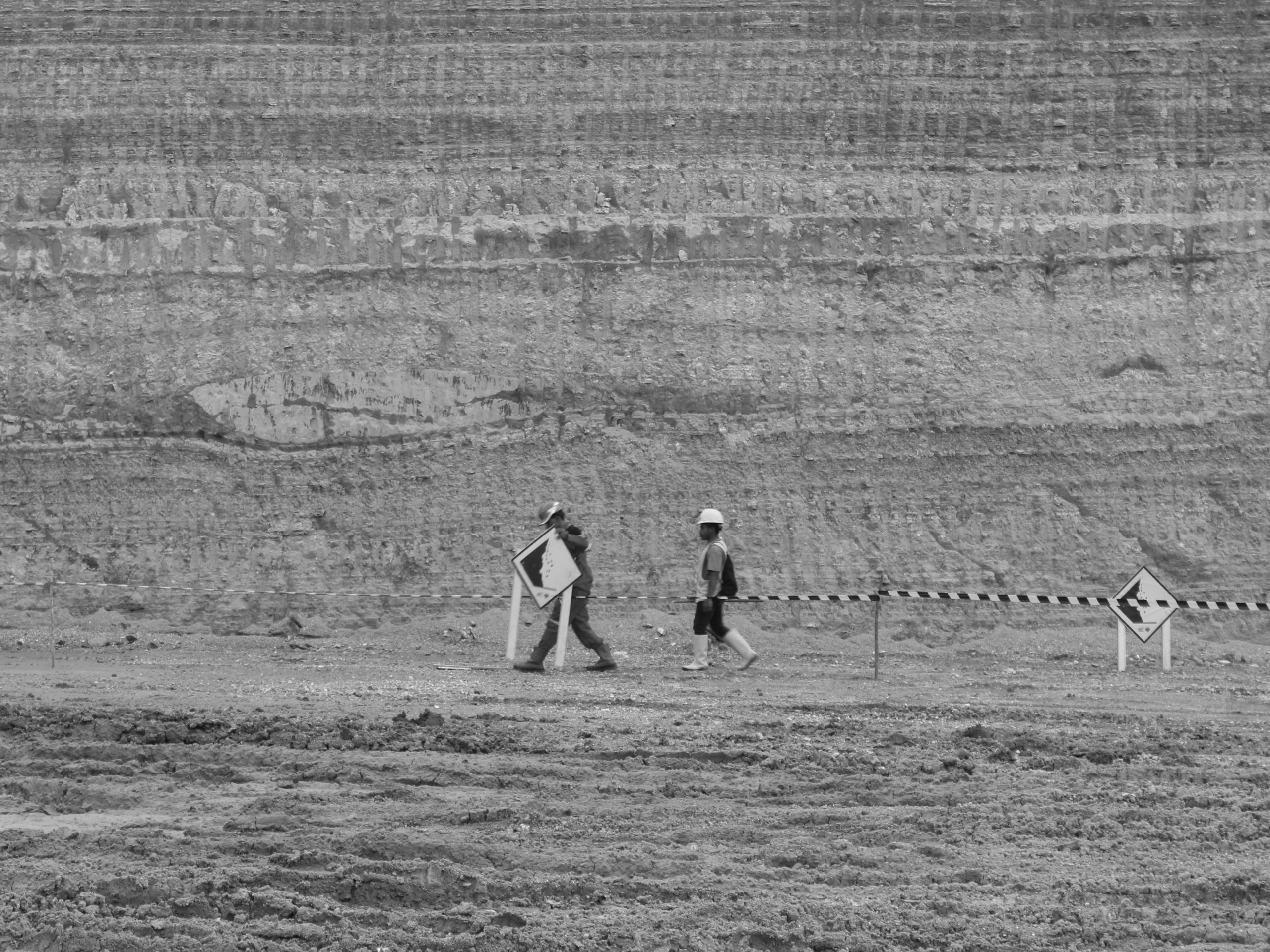
At the Year-End Reflection of AMAN Women, AMAN Secretary General Rukka Sombolinggi stated that indigenous communities are under immense pressure. However, the most distressed are indigenous women, as they are often the last ones standing.
“As security forces pursue the male fighters, it’s the women who guard the villages and keep the resistance alive in company-controlled sites,” Rukka said. “For decades, indigenous women have been at the forefront of the struggle for their communities.”
Mama Mince, who attended the year-end event, shared her reflections on the journey of the Rendubutowe patrilocal women in defending their customary land.
“We appeal for your support and help because we are small folks,” she said. “Right now, we are just fighting to defend our rights. We are very tired.”
Beatriks Nazu expressed her yearning for a new life and a breath of fresh air. “We are exhausted from guarding our land. We are ready to leave, but we demand our rights. The state must take responsibility.”
This article is translated from Indonesian by Niscaya Sirna Nestapa.

